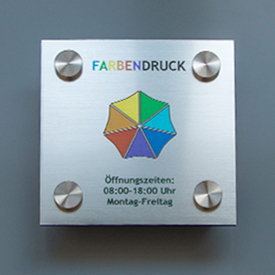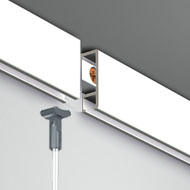Web design for doctors – modern, secure and patient-friendly
Sunday, June 1, 2025
 In today's digital world, the first impression of a doctor's office no longer begins at the reception desk—it begins online. Web design for doctors is therefore much more than just a pretty layout: It's the practice's calling card, a tool for patient acquisition, and an essential component of modern practice communication.
In today's digital world, the first impression of a doctor's office no longer begins at the reception desk—it begins online. Web design for doctors is therefore much more than just a pretty layout: It's the practice's calling card, a tool for patient acquisition, and an essential component of modern practice communication.Why a professional website is essential for doctors
A website for doctors today not only serves as information, but also fulfils key functions:✔
Presentation of services and specialties: Patients want to know what to expect before their first visit. A clearly structured overview of services creates transparency and helps them select the right practice.✔
Online appointment scheduling to reduce staff workload: Digital appointment booking saves time – for both the practice team and patients. Long phone waits are a thing of the past.✔
Patient loyalty through current information, e.g. via blog: Regular posts on health topics, practice news or seasonal tips ensure that patients return and feel well cared for.✔
Building trust through a professional and empathetic appearance: Friendly photos, a clear structure and sensitive texts convey competence and humanity - both central values in the doctor-patient relationship.Furthermore, a website is increasingly becoming a central element of practice marketing. More and more people are searching for doctors online – whether via Google, review portals, or social networks. Without a compelling web presence, you lose potential patients to modern competitors.
Competition is particularly fierce in urban areas or among specialized medical specialists – a modern website can make all the difference here. It improves visibility on Google, strengthens the practice's image, and ensures a smooth first contact with the patient.
Last but not least, an up-to-date and technically clean website also shows one thing: This practice is in tune with the times and takes the needs of its patients seriously.
Requirements for modern web design for medical practices
 A professional web design for doctors must be both technically and visually compelling. Today, the website is not just a digital business card, but also a key tool for patient communication and acquisition. The following features are particularly important:
A professional web design for doctors must be both technically and visually compelling. Today, the website is not just a digital business card, but also a key tool for patient communication and acquisition. The following features are particularly important:✔
Responsive Design: A doctor's website must automatically adapt to different screen sizes – whether smartphone, tablet, or desktop PC. As more and more patients search for practices on mobile devices, this is not an option, but a basic requirement.✔
Fast loading times: Studies show that even a delay of a few seconds causes users to abandon a website. Fast websites not only improve the user experience but also have a positive impact on Google rankings.✔
Accessibility: Medical practices must cater to the needs of as many people as possible – including online. An accessible website offers, among other things, sufficient contrast, legible font sizes, a clear structure, and screen reader compatibility.✔
Search Engine Optimization (SEO): What good is the most beautiful website if it can't be found? With targeted on-page optimization (e.g., by incorporating relevant keywords such as "website for doctors" or "doctor's office in [city]"), visibility and thus the number of potential patients increases.Further quality features are:
✔
Professional photos: Authentic, high-quality pictures of the team, the practice rooms and possibly at work create trust and an initial emotional connection.✔
Consistent corporate design: The website should reflect the visual appearance of the practice – colors, logo, fonts and imagery must be consistent.✔
Clear call-to-actions (CTAs): Users should intuitively know what to do – whether booking an appointment, calling, or requesting a service. Buttons like "Book an appointment now" or "Contact us" should be clearly visible.The combination of modern design, technical perfection and user-oriented layout ensures that patients feel comfortable on the site – and ultimately make an appointment.
Security and data protection: duty and trust
The protection of sensitive data plays a crucial role, especially in the medical field. Therefore, medical practice websites must:- comply with the GDPR,
- contain a correct imprint and a privacy policy,
- be SSL-encrypted,
- transparently manage tracking and cookies.
Patients notice when a website is trustworthy – and this has a direct impact on the practice’s image.
Patient experience and user-friendliness
In addition to the visual appearance, one thing is particularly important: How does the patient feel on the website? The so-called user experience (UX) plays a decisive role in whether a visitor stays, gains trust – or leaves the site again.Good user guidance ensures that patients can find their way around immediately. The most important elements are:
✔
Clear navigation: A clear menu structure with self-explanatory terms such as services, team, contact, or book an appointment is essential. Nobody wants to spend a long time searching – especially not in a medical context.✔
Understandable language: Medical terminology is often difficult for laypeople to understand. A website should be as clear, understandable, and written in an empathetic tone as possible. The goal is to provide information without being overwhelming.✔
Easy contact: Patients today expect uncomplicated ways to schedule appointments – whether via online form, click-to-call, or WhatsApp Business. The shorter the contact path, the higher the conversion rate.✔
Friendly approach and personal photos: People trust people. Photos of the team, a warm welcome on the homepage, or short personal texts strengthen the emotional connection to the practice.In addition, a well-thought-out design pays off: a friendly color scheme, generous white space, easy-to-read fonts and intuitive page navigation increase the length of stay and encourage repeat visits.
People with special needs should also be considered: e.g., contrast for the visually impaired, simple language for older users or keyboard navigation.
Patient-friendly web design means guiding users intuitively through the content – without technical or linguistic barriers. It's about building trust, breaking down barriers, and creating a positive digital experience that reflects the practice's values.
Conclusion & Recommendation
Doctors and dentists looking to create or modernize a website should rely on an experienced partner who understands the ins and outs of the healthcare industry. Praxismarketing by agentur-braun offers exactly that: modern, secure, and patient-friendly websites for medical practices – including hosting, SEO, and ongoing support upon request. Whether for general practitioners, specialists, or dentists – with a strong web presence, you can optimally position your practice for the future.Find out more now: Webdesign für Ärzte
Sources:
1. German Medical Association: Requirements for Medical Websites
2. GDPR (General Data Protection Regulation), EU 2016/679
3. Google Search Central: UX and SEO Basics
4. agentur-braun: https://arzt-website-webdesign.de/




















































